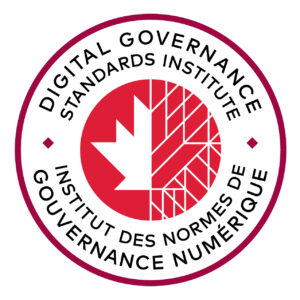What’s new at Inera and around the industry
March/April 2023 Newsletter
Customer news: Digital Governance Standards Institute
A warm Inera welcome to our newest eXtyles STS customer, the Digital Governance Standards Institute!
Part of the Digital Governance Council, the Institute is Canada’s only accredited digital governance standards development body. The Institute enables greater trust and confidence in Canada’s digital systems through developing technology governance standards collaboratively across a range of stakeholders. Digital governance establishes the processes, policies, standards, and accountability needed to manage the effective and efficient use of technology across organizations and society; through good digital governance, the Institute aims to make participation in the digital economy safe and positive for Canadian people and organizations.
We’re delighted that eXtyles STS will be part of this effort!
Edifix news
Retraction Watch Integration
Edifix Retraction Detection and Notification just got a big upgrade! Now, in addition to searching for retraction metadata on PubMed and Crossref, Edifix will also search the Retraction Watch database.
You’ll find all the details on this updated functionality on the Edifix blog.
Styles update
The Edifix style library now includes almost 30 bibliographic reference styles and style variants, from American Chemical Society format to Vancouver/ICMJE style! Our most recent additions are the house styles of the Royal Australian College of General Practitioners (added in January) and the Journal of Interventional Epidemiology and Public Health (added in March).
Style updates are documented on the Edifix blog, and you can always find the complete list on the Edifix FAQ page: What editorial styles are available in Edifix?
People of Inera: Joni Dames
This feature will introduce you to newer Inera team members and help you get to know not-so-new team members better.
One of our Senior Solution Architects, Joni Dames has been with Inera since October 2010. While she still helps out on technical support queries when needed, their primary focus is on creating new eXtyles customer configurations and adding to existing ones. Every now and again, she also gets to dip her toe into updating the code.
They also provide user training for people new to eXtyles and advanced training for those who want to dig deeper into modifying eXtyles to do different things.
 Q: What is your favorite thing about your job at Inera?
Q: What is your favorite thing about your job at Inera?
I love trying to work out how to make the software do something new. I think that’s really fun.
It’s one of the things that I love most about publishing in general, because publishers are constantly evolving with the times—they need to take their content in different directions, move it to different platforms, meet all the different requirements of vendors and hosting platforms and archives.
I’m really enjoying being involved in this process outside of my official job description as well: I’m on the JATS, BITS, and STS committees, and last year I joined the JATS4R (JATS for Reuse) Accessibility Committee, where we’re thinking beyond just 508 compliance, beyond doing the bare minimum for accessibility.
My other favorite part is providing advanced training. I love teaching people how to modify our software, how to make it do fun and interesting things by writing in their own code.
Q: Tell us about your pets!
We don’t currently have any pets. Our late cat, Abby, lived a long, good life. She was loved, but we’re holding off on new pets until my youngest child is potty trained. In the meantime, I do have two kids who are lively.
Q: Outside of Inera, what are some of your favorite things?
I’m always happy to talk about my favorite things.
If you’re in the Boston area, you should go to the Isabella Stewart Gardner Museum, which is the best museum! Even if you’re not super into art, her collection is so eclectic; she’s got practically every style in the world, and I love the way it’s arranged. It’s a great place to visit if you’re into heists. It’s got something for everyone—art world enthusiasts, garden enthusiasts, contemporary weird exhibition enthusiasts …
Salem is also one of my favorite places to go, except in October, when it’s wicked packed. The Peabody Essex Museum is another really good museum, especially for specialist exhibitions, and we also took the kids to the New England Pirate Museum down by the waterfront on one of the main drags. (There’s two of them, along with 16 or so witch museums.) The House of the Seven Gables is really cute, and right past it, there’s an adorable old candy shop near a pretty good café. I promise I don’t work for the Salem Marketing Board!
Apparently, the theme for today’s favorites is local Boston tourist attractions. In the near future, I can add a “Top 3 family-friendly campsites in New England” category to this list.
Q: What superpower would you choose, if you could only have one, and why?
Teleportation, because then I could go be in lots of different places easily; it’d be so fun!
New from NISO: Recommended Practice for audio and video metadata
As publishers encourage authors to explore research outputs beyond the PDF, it’s also important to think about the metadata that goes with those research outputs! Fortunately, a NISO Working Group has been busy doing exactly that.
The new Video and Audio Metadata Recommended Practice (NISO RP-41-2023), setting out guidelines for administrative, semantic, technical, rights, and accessibility metadata describing video and audio assets, was approved by NISO on February 10 and published on February 13, 2023. You can access the new Recommended Practice here.
ChatGPT, authorship, and you
Everyone’s talking about ChatGPT, and in scholarly publishing, much of the conversation centers on authorship. If you’re among the publishers and journal editors struggling with how to update author guidelines to take ChatGPT and similar AI tools into account, we’ve collected some examples we hope will help!
- In a recent editorial, Annette Flanagin et al. explain how JAMA’s author guidelines have been updated for the age of ChatGPT.
- The ArXiv blog documents ArXiv’s new policy on ChatGPT and other AI tools.
- Cambridge University Press has updated their Research Publishing Ethics Guidelines for Journals.
What we’re reading: The “What we’re writing” edition
Our theme in this issue is accessible and inclusive publishing workplaces!
In the February special issue of Learned Publishing, we recommend “Why disability data capture is key to improving inclusion outcomes in scholarly publishing” (co-authored by Sylvia Izzo Hunter and Erin Osborne-Martin from Wiley Partner Solutions, along with Simon Holt and Stacy Scott). This article is free to read.
On the Scholarly Kitchen blog, a set of three blog posts from the SSP DEIA Committee takes on the topic of advancing accessibility in scholarly publishing. If you haven’t already, check out Part 1, Fostering Empathy; Part 2, Building Support; and Part 3, Best Practices.
And speaking of best practices, we highly recommend this year’s Miles Conrad Lecture (presented during NISO Plus 2023), delivered by Dr. Safiya Umoja Noble and titled “Decolonizing standards: A provocation.” Dr. Noble’s talk was intended to open a conversation about the need for those of us who create and work with standards today to interrogate the history of standards—and our own history—and the opportunity we have right now to reimagine our work as part of a truly global and equitable community.
Back in the Scholarly Kitchen, Bruce Rosenblum and Sylvia Izzo Hunter have some thoughts about Modern Comments in Word and what they can teach us about best practices for software development; and Wiley’s Jay Flynn talks about paper mills and what publishers can do about them.
Building partnerships: News from Wiley Partner Solutions
Wiley and Aries Systems have formalized their partnership, recognizing the great work that our friends at J&J Editorial have been doing with Editorial Manager and ProduXion manager, and setting up both partners to deliver more robust support and services for academic and scholarly publishers.
Read more in the press release from Aries.
Upcoming conferences
► CSE 2023 Annual Meeting
April 30 – May 2 | Toronto, ON
Look for Sylvia Izzo Hunter at the Short Course for Manuscript Editors, on the panel “Implementing Accessibility: Pathways to Success” on May 2, and in the Wiley Partner Solutions booth!
► 45th SSP Annual Meeting
May 31 – June 2 | Portland, OR
Find Wiley Partner Solutions in the exhibit hall! Register on the SSP website.
► JATS-Con 2023
June 13-14 | Virtual
► Balisage: The Markup Conference 2023
July 31 – August 4 | Virtual
Register on the Balisage website.
Word Tip: Find and replace paragraph-level formatting
ℹ️ Our Word Tips are tested on recent versions of Word for Windows. If you are using Word for Mac, which has a smaller feature set, your mileage may vary.
We’ve shared tips before on using Replace (keyboard shortcut: ctrl+h) to find and replace face formatting and to find and replace language, font, or style. Did you know that you can also find and replace elements of paragraph formatting, such as alignment, indention, line spacing, leading, and widow/orphan options?
Here’s how that process works:
- Open the Replace dialog box (Home > Replace or ctrl+h) and click the More >> button (hotkey: M) to show all search options.
- Make sure both the Find what: box (hotkey: n) and the Replace with: box (hotkey: i) are empty.
→ Warning: Anything in the Replace with: box will be used to replace entire paragraphs that meet your Find what: criteria! That includes spaces, so even if the box looks empty, check carefully.
- Make sure the No Formatting button (hotkey: t) is not grayed out.
- With your cursor in the Find what: box, click the Format button (hotkey: o), and from the pop-up menu, choose Paragraph… (hotkey: p).
- You should now see the Find Paragraph dialog, which has the same 2 tabs as the normal Paragraph dialog: Indents and Spacing (hotkey: i) and Line and Page Breaks (hotkey: p). On these tabs, you can choose the combination of paragraph formatting you want to search for. A checkbox with a checkmark means the element is turned on; an empty checkbox means the element is turned off; and a checkbox with a square means the element will be ignored in your search.
- Click OK to return to the Replace dialog.
- With your cursor in the Replace with: box, repeat steps 4-6 to choose the paragraph formatting you want to impose.
- Click Replace (hotkey: r) to start your search-and-replace process, and once you’ve verified that it’s working as intended, continue until finished!
💡 You can always find more Word Tips in our newsletter archive!